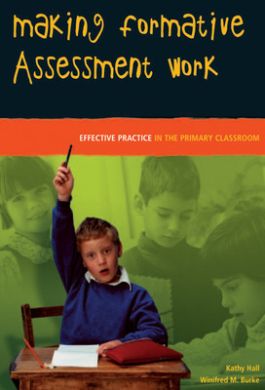Making Formative Assessment Work
- Access the eBook anytime, anywhere: online or offline
- Create notes, flashcards and make annotations while you study
- Full searchable content: quickly find the answers you are looking for
Chapter 1: Learning and Assessment;
Chapter 2: Formative Assessment and Official Policy: Issues and Challenges;
Chapter 3: Formative assessment: What are teachers doing?;
Chapter 4: Feedback, Power and the Roles of Teachers and Learners in Formative Assessment;
Chapter 5: Helping Learners Understand How Their Work is Judged;
Chapter 6: Formative Assessment and Literacy;
Chapter 7: Formative Assessment and Numeracy;
Chapter 8: Formative Assessment and Science;
Chapter 9: Art and Design and Formative Assessment;
Chapter 10:Formative Assessment and History;
Chapter 11: Assessing What We Value:Learning Dispositions in the Early Years;
Chapter 12: Playful Learning, Learning Stories and Making Assessment Visible in the Early Years;
Chapter 13: Level Descriptions and Opportunities for Formative Assessment
(with Austin Harding)
Conclusion
This book explains and exemplifies formative assessment in practice. Drawing on incidents and case studies from primary classrooms, it describes and analyses how teachers use formative assessment to promote learning.
It argues the case for formative assessment with reference to sociocultural perspectives on learning and it examines this in the context of current assessment policy.
Themes addressed in the various chapters include feedback, the power and roles of learners and teachers in formative assessment; self and peer assessment; and sharing success criteria with learners. Individual chapters explore formative assessment in: literacy, numeracy, art, science,and history. In addition there are two chapters on formative assessment in the early years.
Making Formative Assessment Work provides teachers, student teachers, teacher educators and researchers with a sophisticated grasp of issues in formative assessment and how they relate to the improvement of pupil learning.

